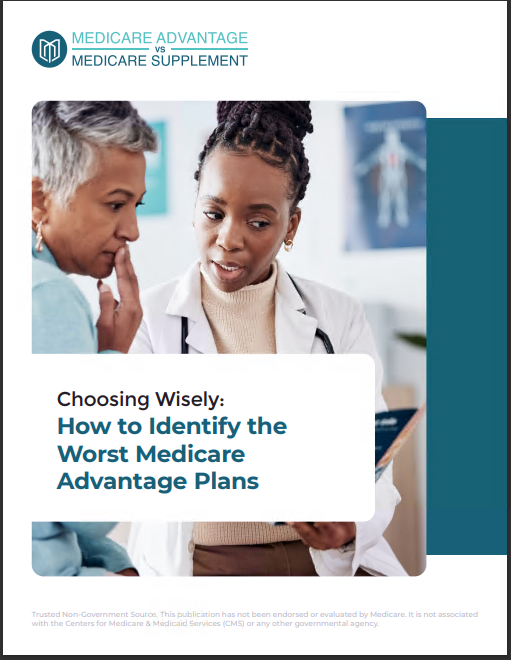Key Takeaways
-
Medicare Part D may appear comprehensive at first glance, but its coverage can be limited in ways that only become obvious when you try to fill certain prescriptions.
-
Understanding what Part D doesn’t cover, including formulary exclusions, tier restrictions, and prior authorization rules, is just as important as knowing what it does.
Why Medicare Part D Plans Aren’t as Straightforward as They Seem
When you first compare Medicare Part D plans, they often look like they cover a wide range of prescription drugs. But as you begin using your benefits, you might quickly realize that “coverage” doesn’t mean what you thought it did. Part D coverage is defined by plan formularies, tiers, exclusions, rules, and restrictions that can leave you facing unexpected out-of-pocket expenses.
In 2025, Medicare Part D still follows a multi-phase structure, capped by a $2,000 annual out-of-pocket maximum. However, that cap only applies after you’ve paid deductibles, co-pays, and coinsurance amounts throughout the year. Before you ever reach that ceiling, gaps in what the plan covers may force you to pay entirely out of pocket for certain drugs.
Understanding the Part D Formulary
Each Medicare Part D plan maintains its own formulary, or list of covered drugs. These formularies are approved by Medicare but vary widely between plans. If your drug isn’t on the formulary, it’s not covered at all.
Plans categorize drugs into tiers, usually like this:
-
Tier 1: Preferred generic
-
Tier 2: Generic
-
Tier 3: Preferred brand-name
-
Tier 4: Non-preferred brand-name
-
Tier 5: Specialty drugs
The higher the tier, the more you typically pay. Even if your drug is listed, it may be placed in a high-cost tier. And if it’s excluded entirely, you pay the full cost regardless of where you are in the benefit phase.
What Isn’t Covered Under Part D
Part D doesn’t cover everything. In fact, there are several categories of drugs and services that fall outside its scope, including:
-
Over-the-counter medications
-
Drugs for weight loss or gain
-
Fertility medications
-
Cosmetic drugs (like hair growth treatments)
-
Prescription vitamins (except some like B12 and prenatal)
-
Drugs covered under Part A or B, such as those administered in a hospital or doctor’s office
If your physician prescribes a drug in one of these categories, you’ll likely be responsible for the full cost.
Prior Authorization and Step Therapy Requirements
Just because a drug appears on your plan’s formulary doesn’t mean you can access it without delay. Many plans impose prior authorization requirements, meaning you must get approval before filling the prescription.
Another restriction is step therapy, where you’re required to try lower-cost alternatives before the plan will cover the medication your doctor originally prescribed.
In 2025, most plans continue to use these management tools to control costs, but they often leave patients caught in a maze of delays, denials, or appeals.
Quantity Limits Can Catch You Off Guard
Even if a drug is covered, your plan might restrict how much of it you can get at one time. This is called a quantity limit. For example, your plan might cover only 15 tablets a month of a particular medication when your doctor prescribes 30. You either pay full price for the rest or go without.
These limitations can be frustrating and sometimes require additional documentation or appeals to override.
Coverage Changes Mid-Year
You might assume that once you enroll in a plan, your drug coverage remains constant for the year. However, Medicare allows plans to make mid-year changes to their formularies, including:
-
Removing drugs
-
Changing tiers
-
Adding new restrictions like prior authorization
While notice must be provided, these changes can leave you scrambling to find alternatives or absorb unexpected costs halfway through the year.
The Appeal Process Isn’t Always Clear or Quick
If your medication isn’t covered or gets denied, you can file an appeal or request an exception. But these processes can be slow, requiring your doctor’s support and sometimes multiple rounds of documentation.
Even when approved, exceptions often apply only for the current plan year. You may need to repeat the process annually, especially if you switch plans during Open Enrollment.
Specialty Drugs Pose the Biggest Financial Risk
Specialty medications, often used to treat chronic or complex conditions like cancer or autoimmune diseases, typically fall into the highest cost tier. Even though the $2,000 cap introduced in 2025 helps, you’ll still pay heavily until you reach it.
Additionally, many specialty drugs require:
-
Prior authorization
-
Strict quantity limits
-
Tiered cost-sharing
Since these drugs can cost thousands of dollars per month, the initial out-of-pocket burden can still be severe.
Part D Doesn’t Eliminate All Out-of-Pocket Costs
Even with the 2025 out-of-pocket maximum of $2,000, your expenses can add up quickly:
-
Deductible: Plans can charge up to $590 before coverage begins
-
Copayments and coinsurance: You pay a share of the cost for each prescription
-
Non-formulary drugs: Not counted toward your maximum
-
Pharmacy network: Using an out-of-network pharmacy often means no coverage at all
It’s possible to reach the cap faster if you rely on high-cost drugs, but not every dollar spent counts toward that limit.
What You Can Do Before Enrolling
To avoid these surprises, it’s important to:
-
Review the plan formulary in detail
-
Check tiers and restrictions for each of your medications
-
Look for prior authorization and step therapy flags
-
Ensure your pharmacy is in-network
-
Talk to a licensed agent listed on this website to compare options
Doing this before you enroll—especially during the Open Enrollment period from October 15 to December 7—can help you choose a plan that fits your actual needs.
Reassess Every Year
Even if your plan worked well this year, that doesn’t guarantee it will next year. Formularies change. Premiums, deductibles, and drug tiers adjust. Your medications may shift. For that reason, it’s essential to reassess every fall during the Annual Enrollment Period.
Watch for Part B vs Part D Confusion
Some drugs are covered under Part B, not Part D, depending on how and where they’re administered. This includes injectables given in a doctor’s office or infused medications provided at outpatient clinics.
If you assume your Part D plan will cover a medication administered by a healthcare professional, you might be surprised by a denial. In these cases, Part B coordination becomes essential.
Avoiding Gaps Takes Proactive Planning
You can’t predict every health event or medication need, but you can reduce the chance of surprises by being proactive:
-
Maintain a current list of all medications
-
Ask your doctor whether any prescriptions may change in the near future
-
Check whether generic or alternative drugs are available
-
Stay informed about formulary changes from your plan
When Coverage Falls Short, Help Is Available
If your Part D plan doesn’t cover a necessary drug, or the costs are too high, options include:
-
Requesting a coverage determination
-
Filing an appeal
-
Asking your doctor for a formulary alternative
-
Applying for Extra Help, a federal program that reduces drug costs for those with limited income and resources
In 2025, the Extra Help program remains a critical support tool for many Medicare beneficiaries.
Your Coverage Isn’t Just About the Drug List
When evaluating your Part D plan, look beyond whether your drugs are listed. Consider the bigger picture:
-
What cost-sharing applies?
-
Are there restrictions like step therapy?
-
Can your current pharmacy be used?
-
What happens if your prescriptions change during the year?
These factors determine how effective and affordable your coverage really is.
Know What to Expect From Your Medicare Part D Plan
While the 2025 updates to Medicare Part D improve financial protections with the $2,000 out-of-pocket cap, that only addresses part of the challenge. What isn’t covered—and how plans manage access to covered medications—can significantly affect your experience and expenses.
To make sure your Part D plan serves your needs and budget, be proactive before enrolling, stay informed throughout the year, and reach out for help when coverage falls short.
Make Smart Medicare Choices With the Right Support
Drug costs can feel overwhelming, especially when you’re caught off guard by restrictions, denials, or mid-year changes. A well-matched Medicare Part D plan should do more than look good on paper. It should deliver the coverage you need, when you need it, without hidden roadblocks.
If you’re unsure whether your current plan is the right fit—or you’re comparing plans during open enrollment—talk to a licensed agent listed on this website. They can walk you through what’s covered, what’s not, and how to plan around potential gaps.










